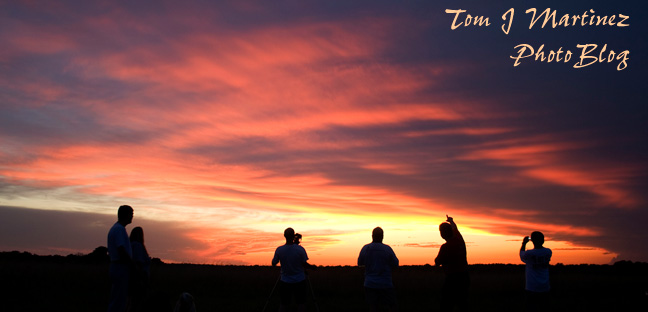Click on the images for larger views
Gloria and I spent a very nice all-nighter at the Astronomical Society of Kansas City's Dark Sky Site. We were hoping to photograph some aurora that were predicted, but did not appear. The night before, I was intrigued by the great image my good friend and astrophotographer Dan Bush took. But that didn't deter me from taking some other images on this wonderfully clear night. The above image was taken just before morning twilight and just after the crescent moon rose above the tree tops.
ASKC members Keith Rawlings and Jim Kethum were the only other observers that night. Their observing tents can be seen glowing with red lights. Up and to the right of the moon is Venus and Jupiter. The day before, the moon was sitting between these planets. The Hyades star cluster form a distinctive "V" shaped group of stars, which makes up the head of the Taurus, the Bull. The bright star in the Hyades is Aldebaran, which marks the glaring "eye" of the Bull. Above the Hyades is the beautiful Pleiades cluster, also known as the Seven Sisters, and as Messier 45.
To the left of Taurus is the constellation Auriga, the Charioteer. Auriga is usually portrayed with a goat over one shoulder. The bright star Capella, meaning little she-goat, marks Auriga's left shoulder. The three small stars to the right of Capella are known as the Kids of Capella.
Above Auriga is another constellation, the Greek hero Perseus. The brightest star in Perseus is Mirfak, meaning "the elbow" of Perseus. The area around Mirfak is a wonderful area filled with many star clusters and great for scanning with a pair of binoculars. To the right of Mirfak is a star called Algol, whose name in Arabic means "head of the demon". Algol is the best known example of an eclipsing binary star. A companion star passes in front of Algol every 2.87 days blocking part of the light from Algol making it dim almost a full magnitude for about 10 hours.
These are all normally called Fall and Winter constellations, seen in evening skies in November and December. But I took this picture at 3:37 in the morning, when most people are sound asleep.
Above is a closer view of the moon, Venus and Jupiter trio. The dark side of the moon is easy to see during a crescent phase such as this. The bright side of the moon shines from direct sunlight, but the dark side shines from light reflected of earth then to the moon and on to our eyes. It is therefore called "Earthshine". Notice the interesting cloud between Venus and Aldebaran.
Technical Info:
Upper Photo - Canon Xti, zoom lens set at 18mm f/3.5, 30 seconds of exposure, ISO 1600.
Lower Photo - Canon Xti, zoom lens set at 41mm f/5, 15 seconds of exposure, ISO 1600.





What a shots!! amazing and very excellent your work... love the watch such a nice creation... thanks for sharing..
ReplyDeleteKansas City Baby Photography